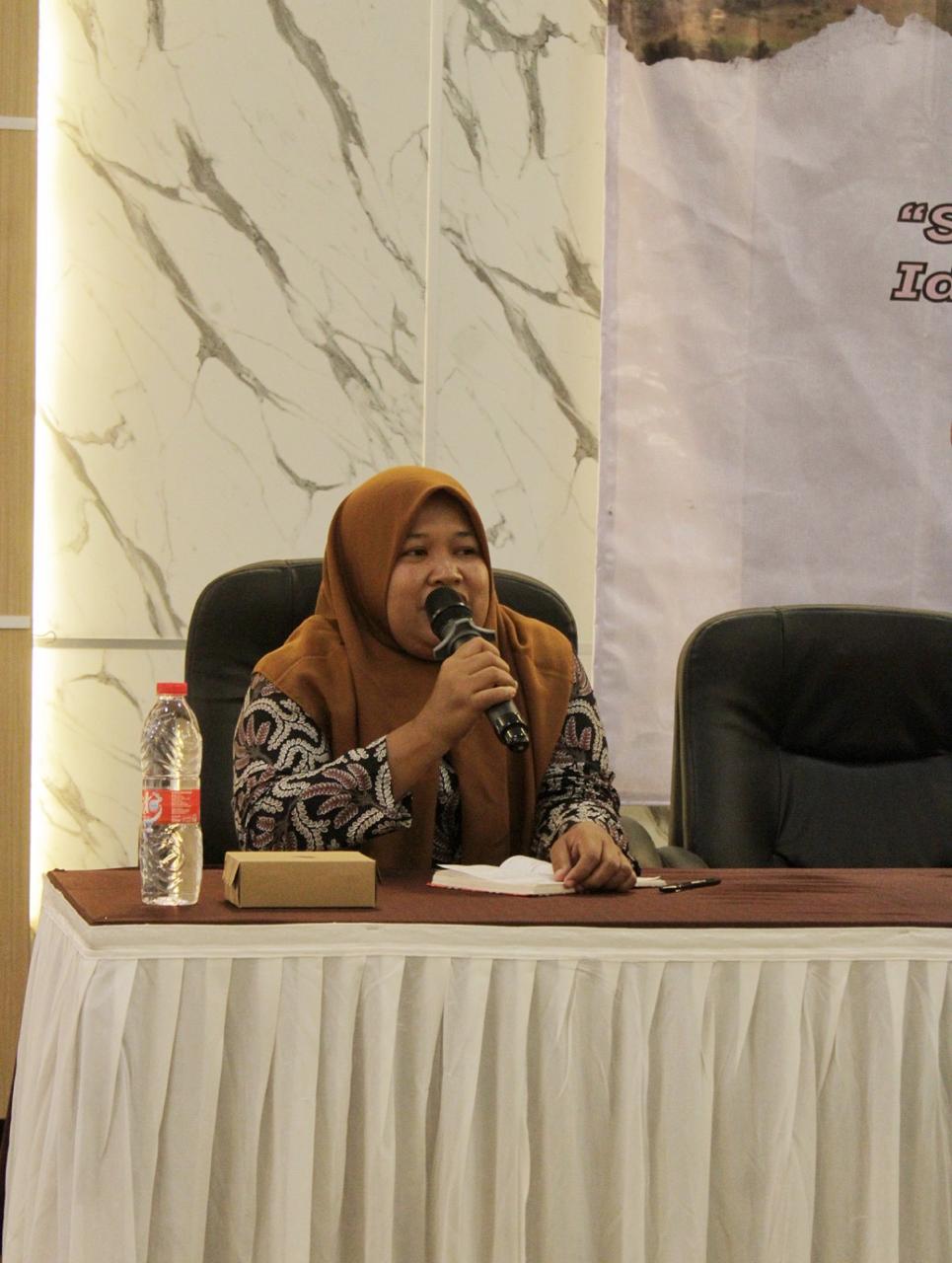
Photo by: Committee of the Seminar and Workshop “Slamet dan Hutannya sebagai Identitas Budaya Masyarakat”
huma.or.id – Quoting humas.jatengprov.go.id (April 24, 2025), Ahmad Luthfi, Governor of Central Java, sent a letter requesting the designation of Mount Slamet National Park to the Ministry of Forestry. This is part of an environmental conservation effort in the area, he said. Luthfi issued Letter Number B/500.4/0005190 concerning the Management of the Mount Slamet Forest Area dated May 28, 2025.
Luthfi’s letter to the Ministry of Forestry still raises various questions. Several activists, non-governmental organizations, and student nature enthusiasts responded. They felt the need to re-examine the reasons in the letter and compare existing practices with the impacts of national park designation.
As such was Een Suryani’s experience dealing with national parks. This indigenous woman from Kasepuhan Karang, Lebak, Banten, presented her testimony at a seminar and workshop on “Slamet dan Hutannya sebagai Identitas Budaya Masyarakat” (Slamet and Its Forest as a Community Cultural Identity) on June 21-22, 2025, at the White House, Botanical Gardens, Baturraden, Banyumas, Central Java.
Een was one of the speakers at the seminar and workshop organized by the Indonesian HuMa Association, along with student nature enthusiasts, Green Corps, the Semarang Legal Aid Foundation (YLBHI-LBH), the Slamet and Its Forest as a Community Cultural Identity Seminar and Workshop Committee, and environmental activists.
The Kasepuhan Karang Indigenous Territory is within the Mount Halimun Salak National Park. According to Een, the livelihoods of the Kasepuhan Karang Indigenous Community are highly dependent on their forests.
“The forest in question is not like a regular forest (as city dwellers understand it). Within the forest are rice paddies, plantations, villages, and other areas,” Een said.
The Kasepuhan Karang Indigenous Community has identified forest land zones. They call them “titipan” (trusted forest), “tutupan” (covered forest), and “garapan” (cultivated forest). This is closely related to local life, which is still steeped in culture, tradition, and local wisdom.
However, forest management is still influenced by the presence of the state-owned forestry company Perum Perhutani. Een said that when the Kasepuhan Karang Indigenous Community works on the land, they must pay a pancen (tender) at harvest time. “For example, when planting rice, they must give the rice to the forestry officer.” However, according to Een, the community works on their land, land passed down through generations.
As the influence of Perum Perhutani continues to grip, specifically, in 2003, the forest area of the Kasepuhan Karang Indigenous Community was included within a national park, namely the Mount Halimun Salak National Park. Een knew absolutely nothing about the national park. “We lacked information from the government,” Een said.
Shortly after the Mount Halimun Salak National Park was established, Een heard unpleasant news from a neighboring village. One resident was barred from entering his own land. The man usually harvested wood for charcoal to sell at the market. He was unaware that his land was within the Mount Halimun Salak National Park.
On another occasion, Een also discovered damaged gardens. All the farmers’ crops were wiped out. It seemed like wild animals had destroyed the area. This had never happened before.
Een and the rest of the community felt unsafe.
Een then fought to restore the situation. The community still had access to their land. Harvests were undisturbed, and they were free to manage their land.
Until a bright spot arrived in 2016. According to setkab.go.id (December 30, 2016), the Kasepuhan Karang Indigenous Community received a Decree from the Palace to designate 486 hectares of Customary Forest. This signaled that the Kasepuhan Karang Indigenous Community had regained access and could manage their land without any interference.
“Therefore, we must consider the impact of the national park. What benefits does it bring us? Could it be that it doesn’t bring us any benefits?” he concluded.
The seminar session began with testimonies from several speakers: Een Suryani (Kasepuhan Karang Indigenous Woman), Daryono (Wana Karya Lestari Forest Village Community Institution), Sera (Jaga Rimba), and Wartam (Head of Ketenger Village, Baturraden, Banyumas, Central Java). The respondents then included Sungging Septivianto, Dian Risdianto (Head of the Area Management Control Sub-Directorate at the Directorate General of Natural Resources Conservation and Ecosystems, Ministry of Forestry), and Dahniar Andriani (Indonesian HuMa Association).
Final Coordinator: Erwin Dwi Kristianto




0 Komentar
Tinggalkan Balasan